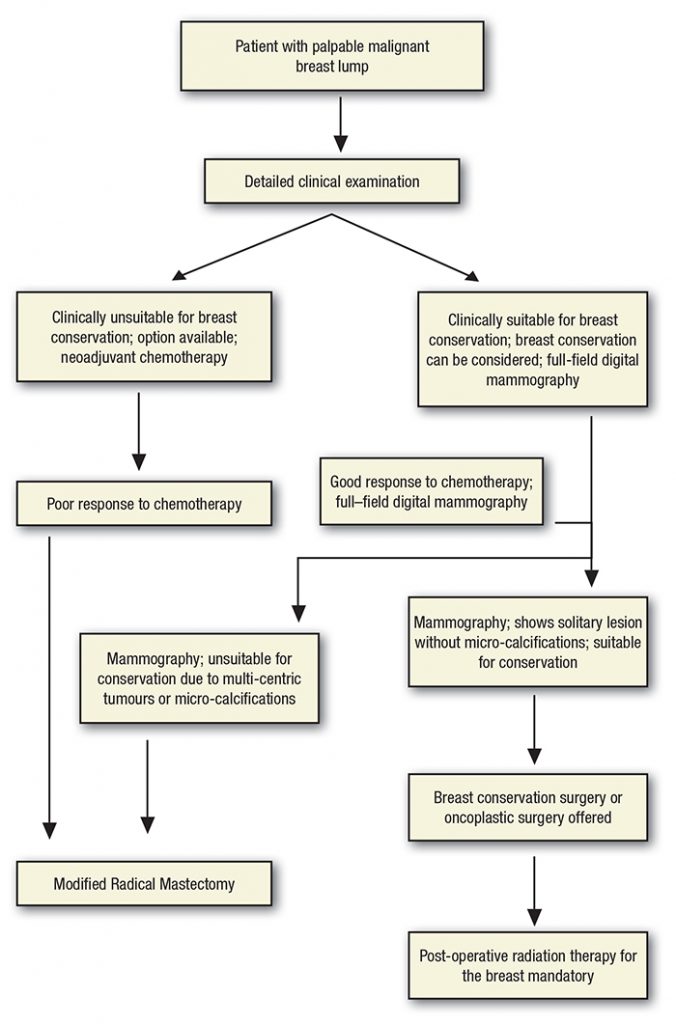Better surgical techniques have pushed the limits of breast conservation even further—oncoplastic surgery combines the principles of cancer surgery and plastic surgery to facilitate organ conservation
For almost a century, surgical treatment of invasive breast cancer meant extirpation of the breast—Radical Mastectomy (RM) or Modifi ed Radical Mastectomy (MRM). This form of surgical therapy was based on the understanding that breast cancer cells progressed to involve axillary lymph nodes in an orderly fashion from the primary tumour by a process of direct extension along the lymphatic channels that mandated removal of the tumour en bloc with the axillary lymph nodes. With realisation that this process was due to embolisation into the lymphatics, the need for en bloc resection became unnecessary and the concept of Breast Conservation Surgery (BCS) was born.
BCS, followed by radiotherapy, is the standard of care today. The safety of this surgical procedure is robust, for it has been borne out in a number of clinical trials with over 25 years of follow-up. Cure rates after BCS are no different from those after MRM. Breast conservation is suitable for patients of all ages, provided the disease is not multi-centric or associated with micro-calcifi cations on pre-operative mammography (suggestive of DCIS i.e. pre-cancer). Quality of Life (QOL) studies have shown that in patients with breast cancer the best QOL is associated with breast conservation because this technique allows a natural and functional breast as against whole breast reconstruction wherein the surgery allows only cosmetic advantage without any functional benefi t. MRM with whole breast reconstruction is reserved for patients who are unfi t for BCS.
Better surgical techniques like oncoplastic surgery have allowed us to push the limits of breast conservation even further. Oncoplastic surgery combines the principles of plastic surgery and cancer surgery in performing surgery for breast cancer. Using this technique, it is possible to make cosmeticallyplaced planned incisions that allow safe cancer surgery and, at the same time, give excellent cosmetic results. This technique also includes symmetrising surgery on the other breast. Today, oncoplastic surgery, combined with sentinel node biopsy, is the new standard of care in the management of patients with early breast cancer.

 Back to Site
Back to Site